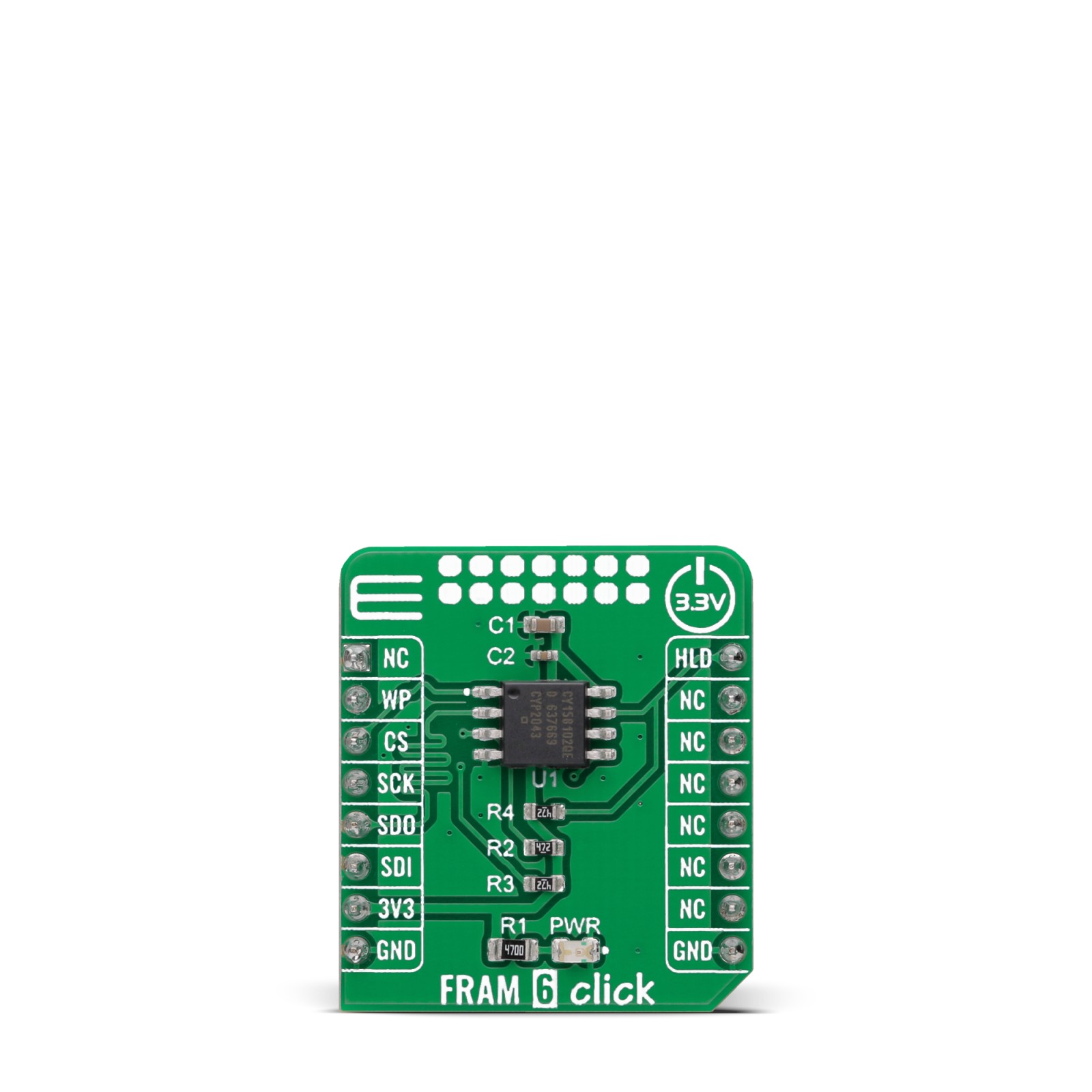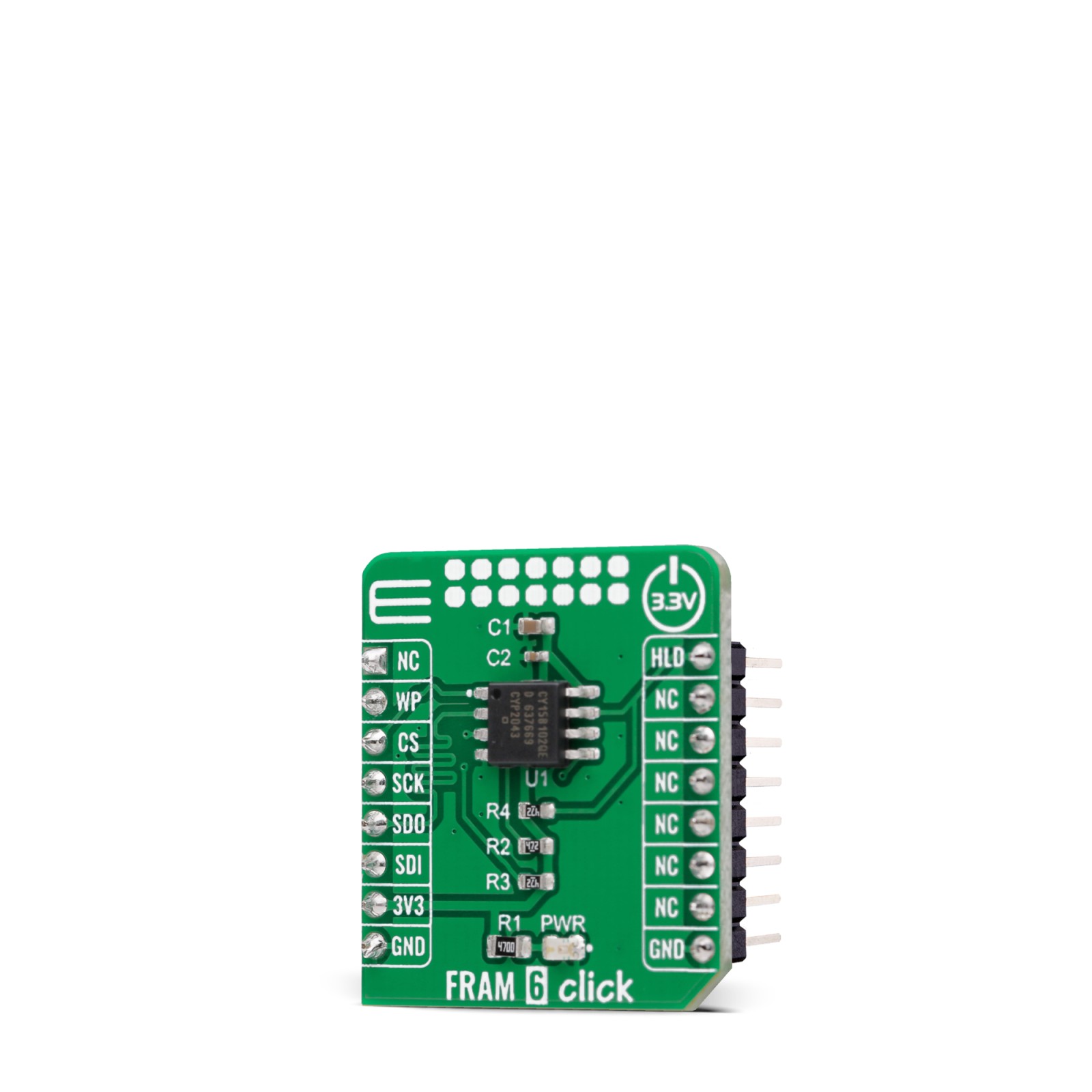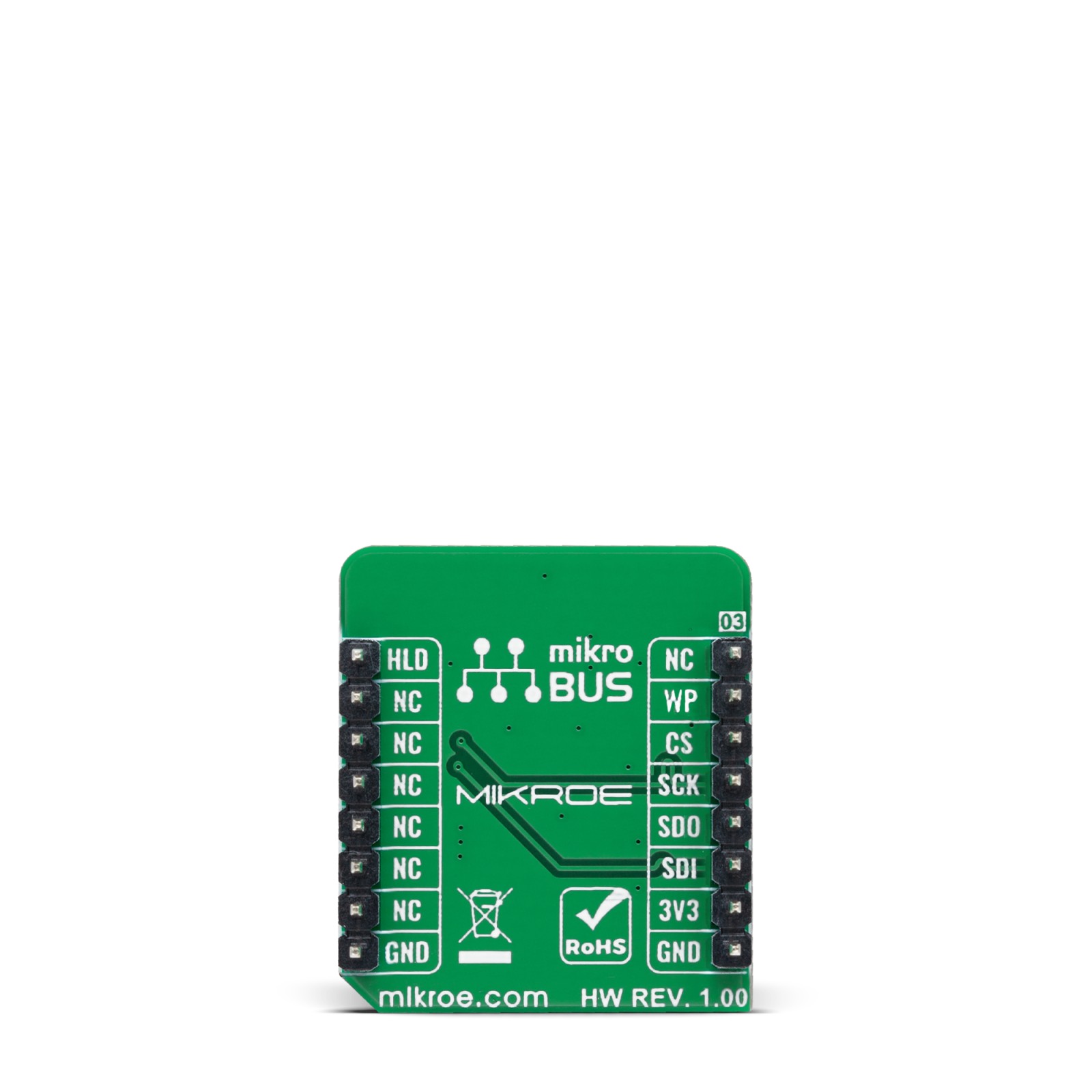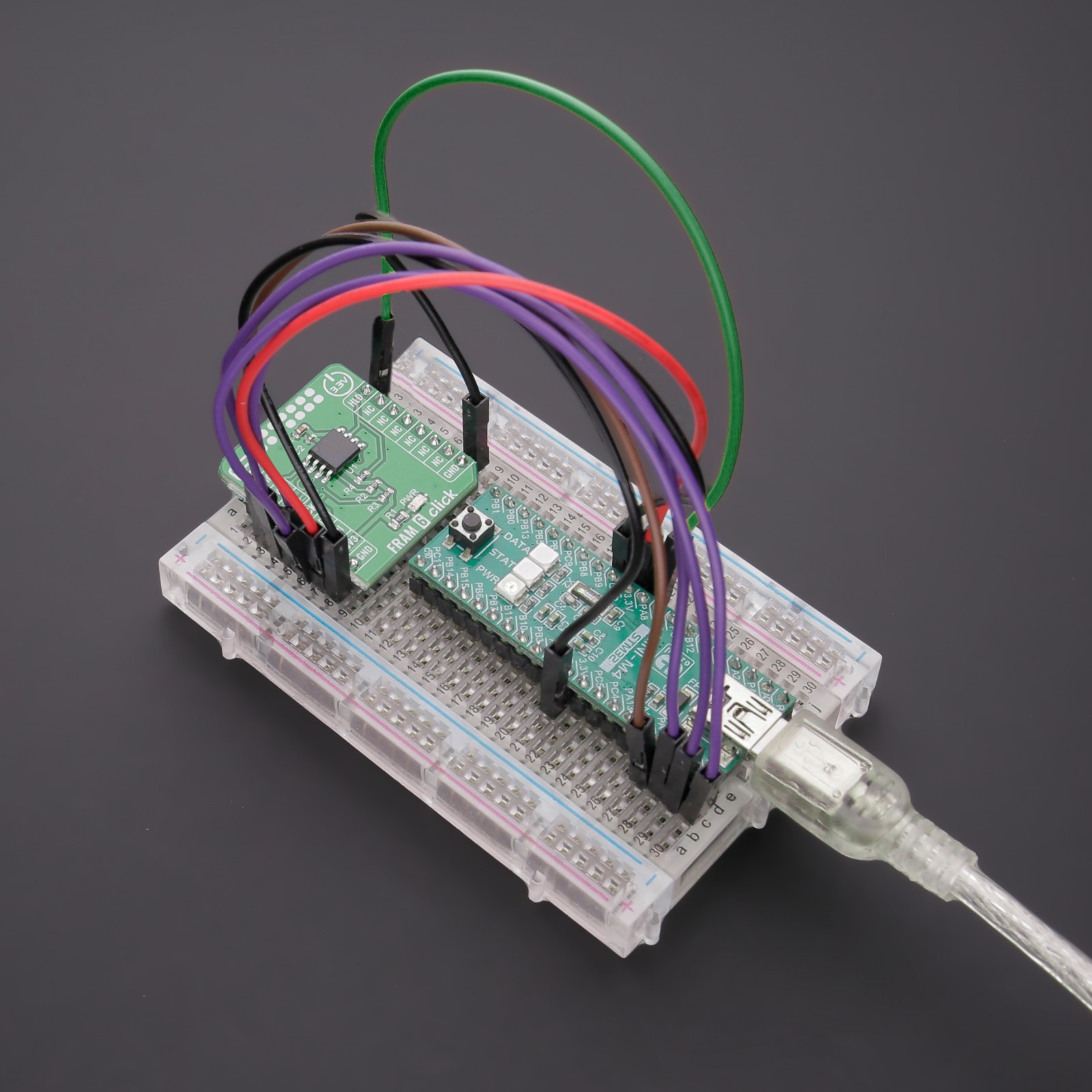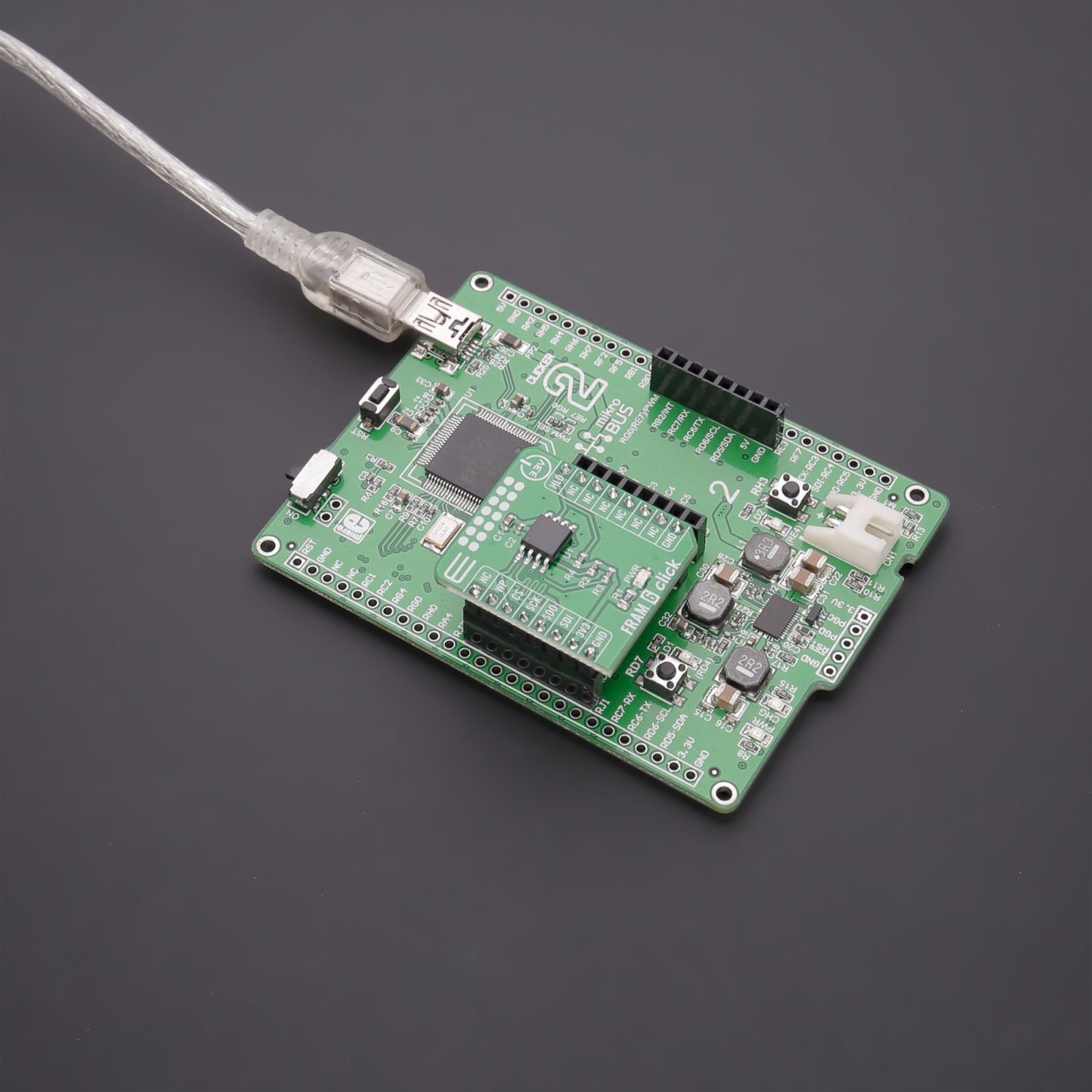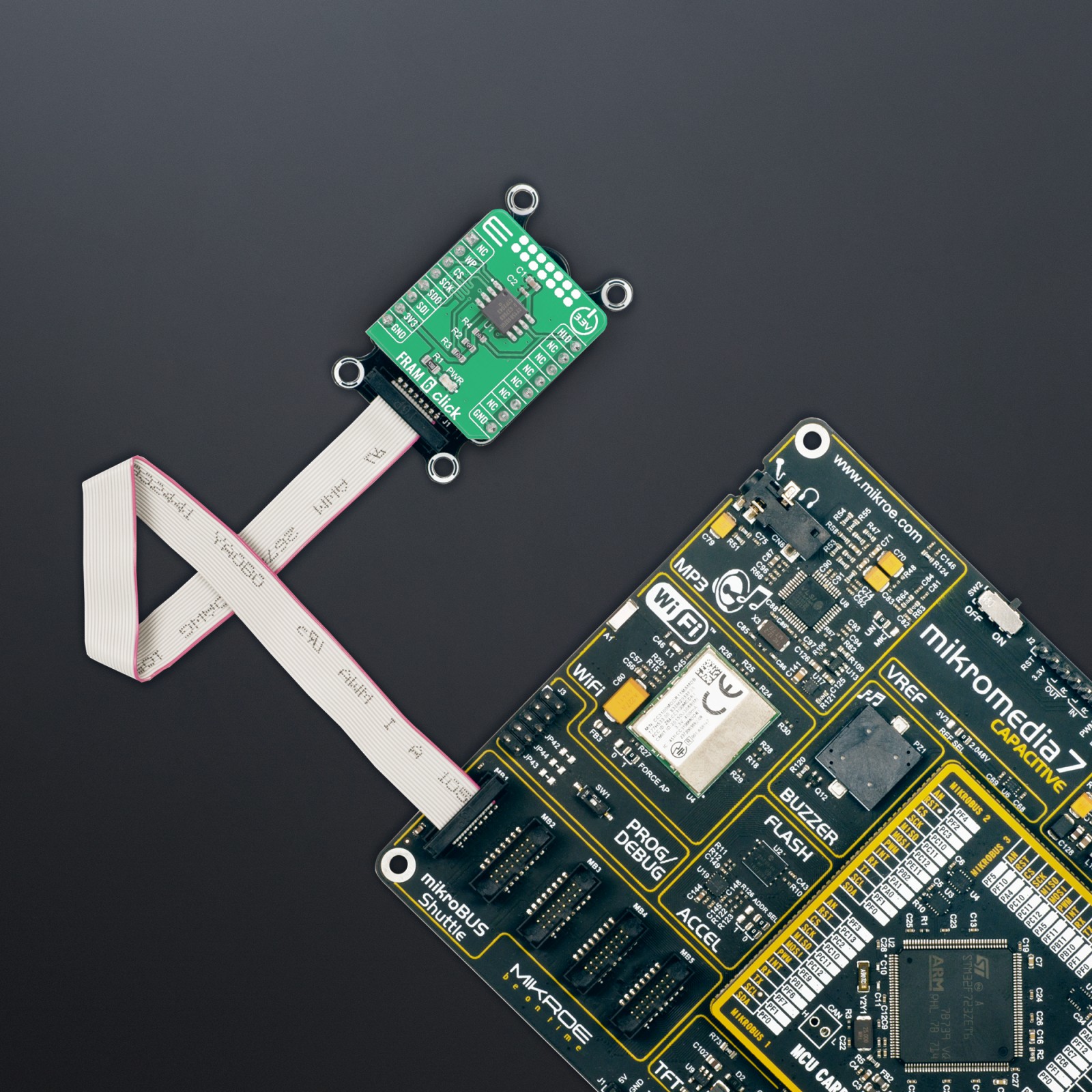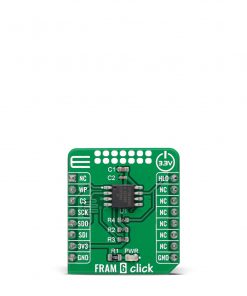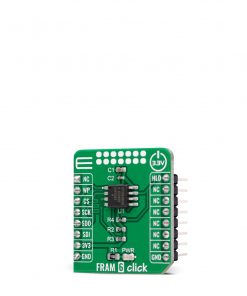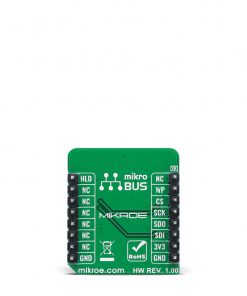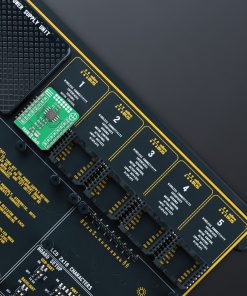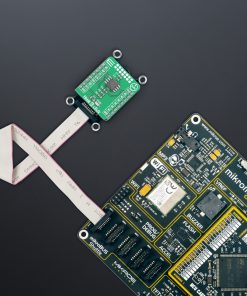FRAM 6 Click
R1,100.00 ex. VAT
FRAM 6 Click is a compact add-on board that contains highly reliable ferroelectric random access memory. This board features the CY15B102Q, a 2Mbit nonvolatile memory employing an advanced ferroelectric process organized as 256K words of 8 bits each from Infineon, now part of Infineon. This SPI configurable FRAM performs read and write operations similar to a RAM providing reliable data retention for 121 years while eliminating the complexities, overhead, and system-level reliability problems caused by serial flash, EEPROM, and other nonvolatile memories. This Click board™ is ideal for nonvolatile memory applications requiring frequent or rapid writes and unlimited endurance.
FRAM 6 Click is supported by a mikroSDK compliant library, which includes functions that simplify software development. This Click board™ comes as a fully tested product, ready to be used on a system equipped with the mikroBUS™ socket.
Stock: Lead-time applicable.
| 5+ | R1,045.00 |
| 10+ | R990.00 |
| 15+ | R935.00 |
| 20+ | R899.80 |

